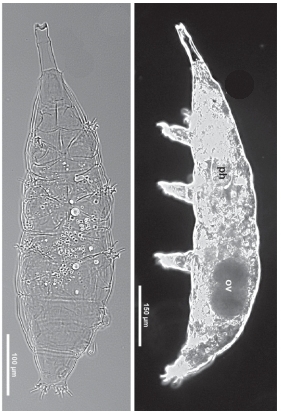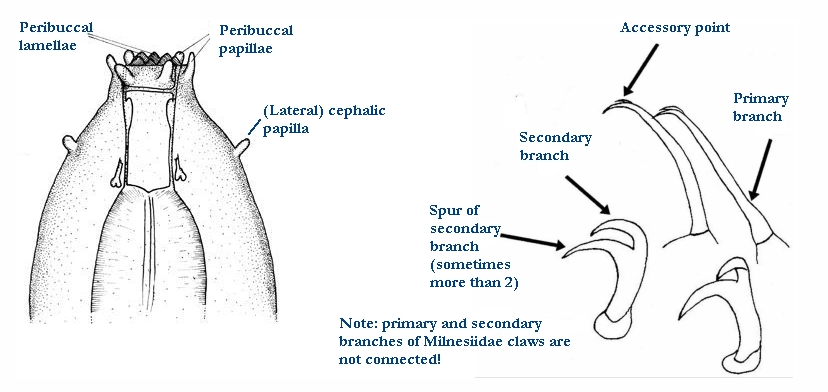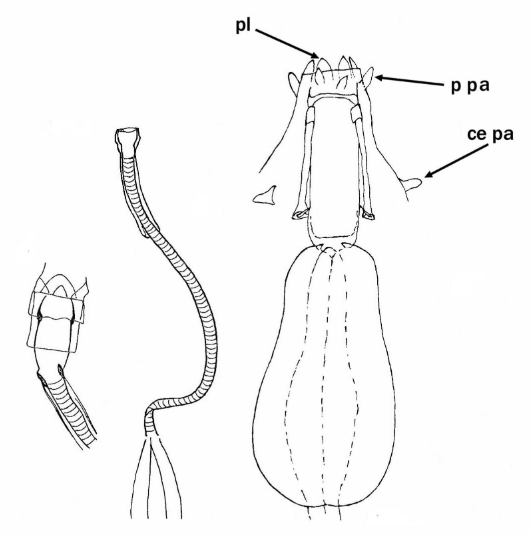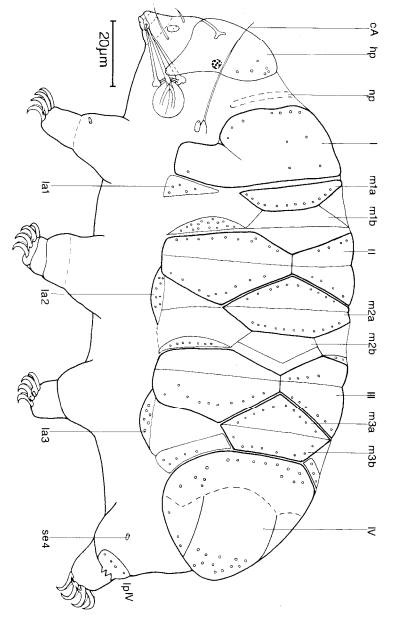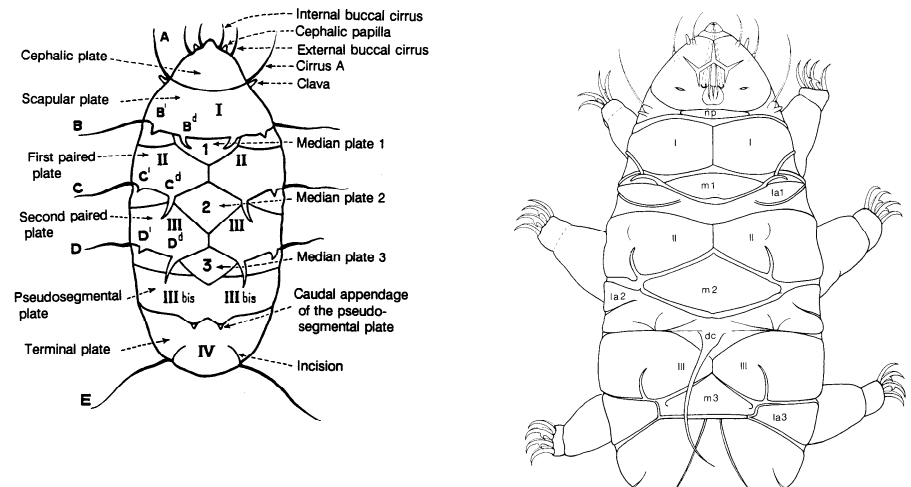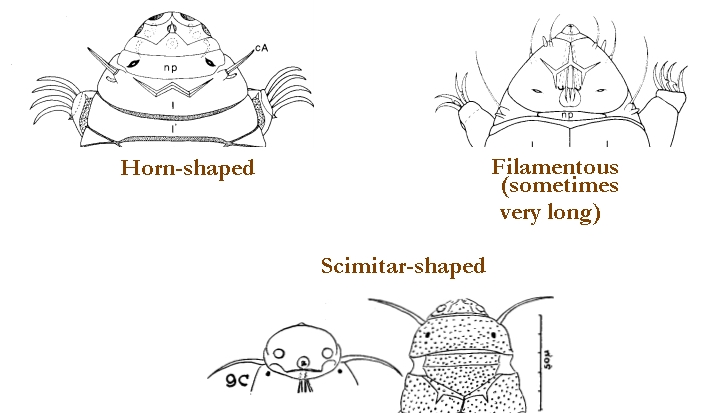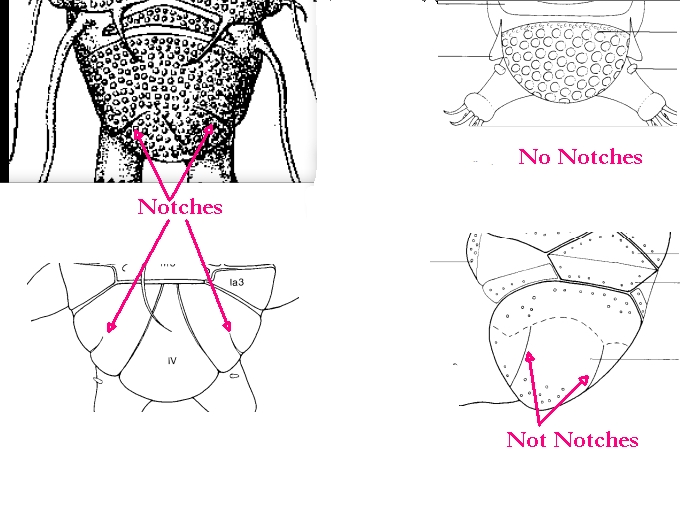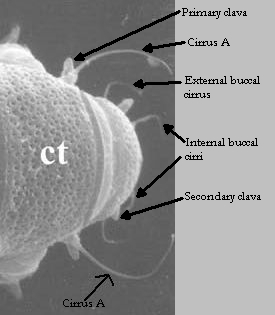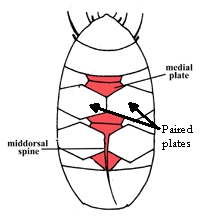Apochela, from Schuster et al. 1980: “…with cephalic papillae and claws with the primary and secondary branches distinctly separate.”
Apochela, from Bertolani et al. 2014: “Eutardigrada having claws with completely separated primary and secondary branches; papillae around the mouth (peribuccal papillae) and 2 lateral papillae on the head (cephalic papillae); elongated pharyngeal bulb completely without placoids.”
Milnesiidae, from Schuster et al. 1980: “…which has cephalic papillae and has claws with well-separated primary and secondary branches…”
Bergtrollus, from Dastych 2011: “Semiterrestrial, medium- to large-sized milnesiids with a very long, telescopically protrusible tubular proboscis (‘snout’). Mouth cavity short. Buccal tube long, flexible, smooth (i.e., without net- /spiral-like strengthening), stylets thin and long. The claw system of Milnesium-type.
The buccal tube length of the new genus is intermediate between that of the genera Milnesioides and Limmenius, as is also the width of the tube. […] The shortest and the widest tube […] in the family have members of Milnesium. In Bergtrollus gen. n. the mouth cavity is short and wide […] resembling that of Milnesium […] but is different in shape and size from the cavity of the genera reported from the Southern Hemisphere, i.e., Milnesioides and Limmenius. The latter taxa, particularly Limmenius, have the mouth cavity distinctly narrower and longer ….
The insertion of the stylet supports in Bergtrollus gen. n. is similar to that in Milnesium and Limmenius and the supports in these genera are inserted at ca. 60 % of the buccal tube length […]. In Milnesioides the supports are inserted much more caudally, at ca. 80 % of the tube length […]. It should be noted that the insertion of the supports (the index values) is more similar in genera with different type of buccal tube (Milnesium vs. Limmenius) but is distinctly different in genera where the buccal apparatus is more similar, i.e., Milnesium vs. Milnesioides. […] As inferring from the presence of proboscis and the morphology of its buccal tube, the new genus could be considered as an intermediate form be- tween genera Milnesioides and Limmenius. Consequently, it could be placed as a “missing link” in such a position within prearranged series of the three remaining milnesiid genera, as illustrated but not commented by Claxton (1999: […]). Milnesioides has a broader but shorter mouth tube than Bergtrollus gen. n. but is somehow similar to the tube of Milnesium. On the other hand, in Limmenius the tube is very long, narrower and much more flexible than in the new genus. Moreover, in Limmenius the tube is provided with a net- /spiral-like strengthening. The organ is within the Milnesiidae the most advanced. The tube of the latter genus resembles such independently evolved organ of e.g., the genus Diphascon (the order Parachela, the Diphasconidae). The mouth cavity in Bergtrollus gen. n. is very short and wide and resem- bles that in Milnesium. The cavity differs markedly from those present in the both Southern Hemisphere genera, Milnesioides and Limmenius. Because of this, one can also hypothesise that the new taxon originated not within the southern (Gondwanan?) lineage to which Milnesioides and Limmenius might belong, but evolved independently from Milnesium-like ancestors within the northern (Laurasian) region.
DISTRIBUTION: Known only from the type locality in the Lyngen Alps, Northern Norway (the Arctic zone).”
Citations:
Bertolani R, Guidetti R, Marchioro T, Altiero T, Rebecchi L, Cesari M. 2014. Phyloeny of Eutardigrada: New molecular data and their morphological support lead to the identification of new evolutionary lineages. Molecular Phylogenetics and Evolution. 76: 110-126.
Dastych H. 2011. Bergtrollus dzimbowski gn. n., sp. n., a remarkable new tardigrade genus and species from the nival zone of the Lyngen Alps, Norway (Tardigrada: Milnesiidae). Entomologische Mitteilungen aus dem Zoologischen Museum Hamburg. 15 (186): 335-359.
Schuster RO, Nelson DR, Grigarick AA, Christenberry D. 1980. Systematic criteria of the Eutardigrada. Transactions of the American Microscopical Society. 99: 284-303.
